Digital footprint: cost of a single tweet and a "Thank you" email

Two hours after the official release of Threads, Meta's text-oriented alternative to Twitter, the app reached 2 million downloads. This number surged to five million just four hours later. In a world full of social media, what are the potential environmental costs as we immerse ourselves further in the digital realm?
As of April 2023, approximately 5.18 billion individuals have internet access— that accounts for 64.6% of the global population (Figure 1). The environmental impact of using the internet depends on how clean the energy use is that powers the internet.
Digital footprint
Digital technologies currently contribute to 4% of global carbon emissions and are expected to double by 2025. At the same time, the energy consumption associated with the production and usage of our diverse range of devices is increasing at a rate of 9% annually.
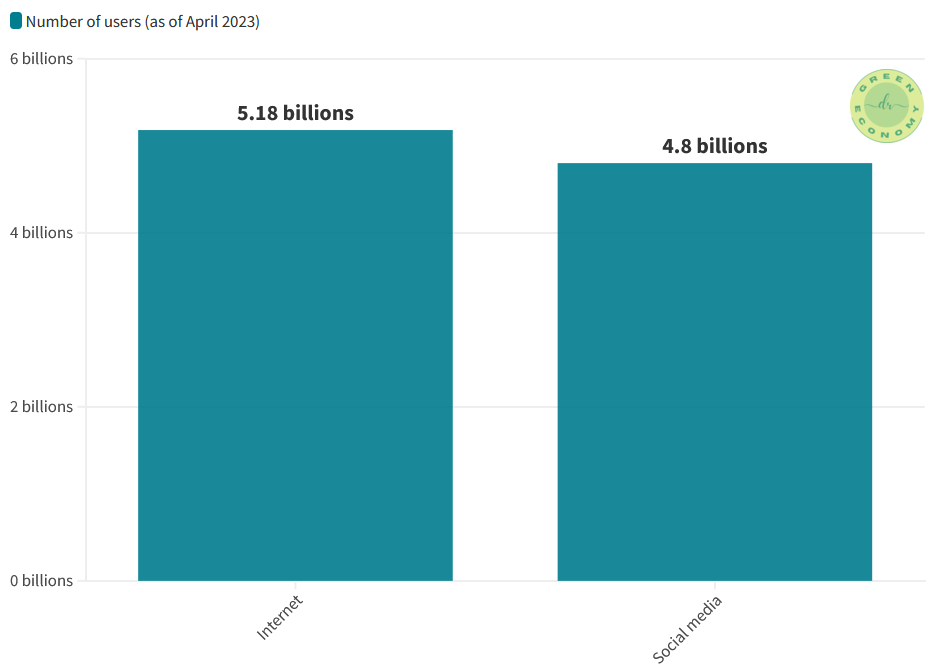
The Financial Times reported the carbon footprint generated by data servers has already surpassed the carbon footprint of pre-Covid air travel. Since only 5% of the global power grid relies on renewable sources, a significant portion of the energy powering our social media and emails is derived from fossil fuels.
Read: When will fossil fuels run out?
Emissions from social media
Taking the example of Twitter, whose business model and principles are similar to the recently hyped Threads, the environmental impact of a single tweet estimated by multiple climate experts is roughly 0.026g CO2-equivalent (CO2e).
The annual carbon footprint of Twitter is approximately 3.8% of global CO2 emissions— equivalent to approximately 5000 flights travelling between Paris and New York.
Quantifying the exact annual carbon footprint of each account remains challenging. However, a climate tech organization, Greenly’s CEO Alexis Normand states the carbon footprint of a tweet varies significantly based on the account's following.
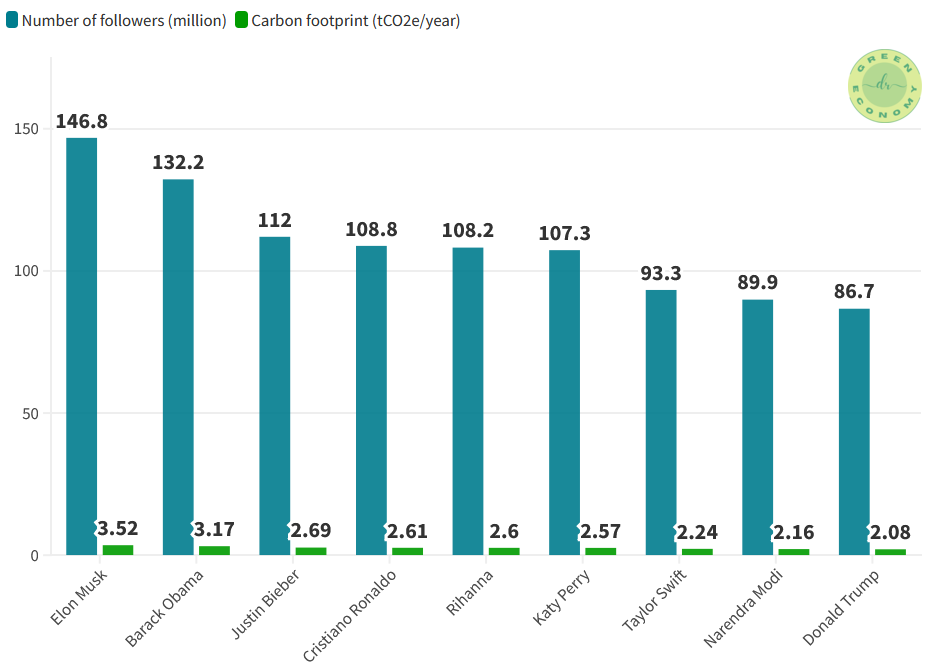
Figure 2 shows the nine most-followed Twitter accounts as of writing this article. Due to the huge following, Elon Musk’s eight tweets per day on average make a huge contribution compared to 100 tweets by someone with much fewer followers.
This is not to say to avoid having a massive following but to motivate social media platforms to have less dependency on fossil fuel-aided electricity.
Social network operators can consider relocating their data centers to countries with lower carbon-intensive electricity generation and relying on renewable energy sources for electricity generation.
However, Twitter is still not in the top four carbon footprint contributors of digital assets. Netflix is the highest emission-contributing medium at the moment due to its high resolution (HD) offering and number of users as demonstrated in Figure 3. Watching one hour of HD resolution needs 220–370 watts of electricity, which is about 100–175 g of CO2.
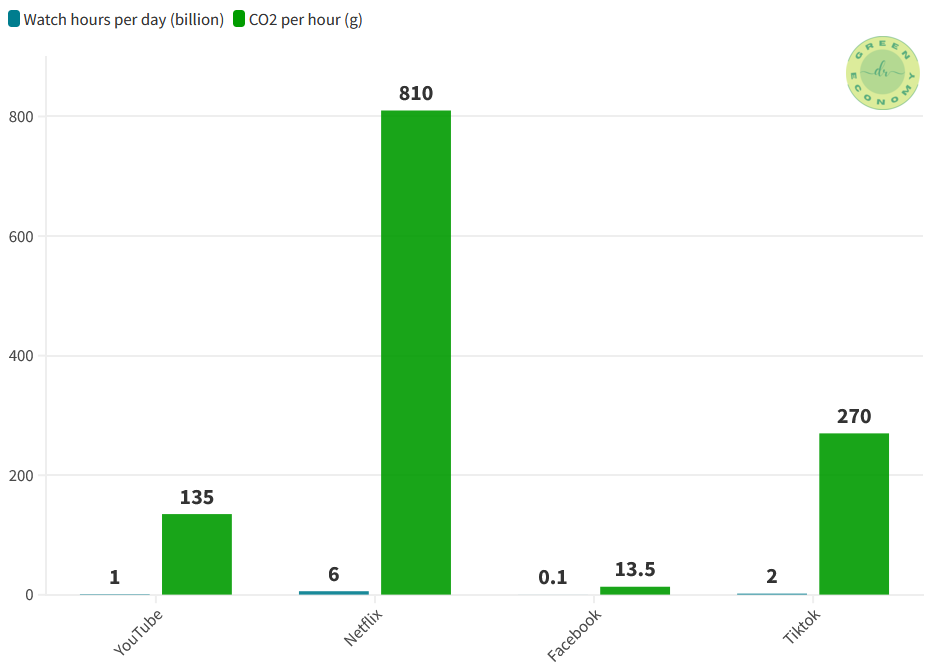
Similarly, a single hour of video conferencing results in approximately 43 kg of CO2 emissions, while the act of watching online videos contributes to an astonishing 300 million tonnes of CO2 emissions annually.
Do you reply if all you have to say is "Thank you"?
How about the dozens of emails we receive every day? This year, the world is currently counting 347.3 billion emails each day, which marked a 29% rise compared to 2017. Surprisingly or not, more than half of these emails are categorized as spam.
The total carbon emissions associated with emails are shown in Figure 4. On average, an email carries a carbon footprint of 0.3g CO2e. However, this value decreases when the email is sent directly from one phone to another, resulting in a carbon footprint of 0.2g CO2e.
Simple emails with no attachments are 4g CO2e, while larger emails with picture attachments are about 50g CO2e. If an email is categorized as spam and intercepted by the inbox filter, it is less but still generates a carbon footprint of 0.3g CO2e.
While this may appear negligible on an individual basis, the cumulative effect becomes significant when considering that the average person sends ten unactionable or 'unnecessary' emails per week. Now, calculating this on a national and world scale leads to a substantial carbon footprint.
Conversely, the carbon footprint increases significantly for longer emails that take ten minutes to write and three seconds to read, reaching 17g CO2e. Furthermore, if an email contains an image or an attachment, the carbon footprint rises even further to 50g CO2e.
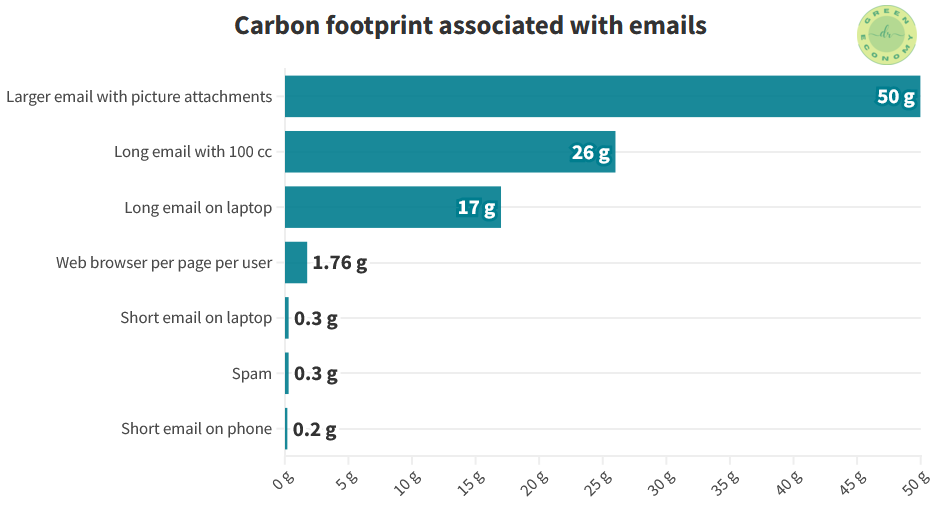
This means, if you receive an average of 10 emails per day, comprising 5 short emails, 2 emails with attachments, and 3 spam emails, your daily carbon emissions from emails alone would amount to 101.9 g.
Over the course of a year, this accumulates to approximately 37 kg of carbon emissions solely from emails. This is equivalent to driving a compact-sized electric car approximately 200km.
How to reduce your digital emissions?
Of 4.26 billion email users (as of 2022), if every user refrained from sending just one unnecessary email per day, the reduction in carbon emissions would amount to approximately 852 tonnes. This reduction is equivalent to the emissions produced by 2939 direct return flights from London Heathrow to Berlin.
Mike Berners-Lee, a professor at the Environment Centre at Lancaster University, provided insights to The Guardian, stating that when you type an email, your computer consumes electricity. Once you press send, the email traverses through the network, which also requires electricity to function. The email eventually gets stored in data centers, commonly referred to as the cloud, which has significant electricity demands.
In a year, an individual's typical email usage results in a carbon footprint ranging from 3 to 40 kilograms of CO2e, which is comparable to driving a small petrol car for approximately 10 to 128 miles. When considering the global scale with 5.18 billion users, the impact becomes significant.
However, before you book your flight ticket, the intention is not to replace every email with an in-person meeting that requires travel. While it is true that emails have a significantly smaller carbon footprint compared to in-person meetings, there are still numerous ways to reduce the environmental impact of emailing.
A small gesture, such as not sending unnecessary ‘thank you’ or ‘yes’ emails, deleting emails that you don’t need, unsubscribing from newsletters you don’t read (If you are reading this, you love Dr. Green Economy. Thank you!) should lessen the carbon load.
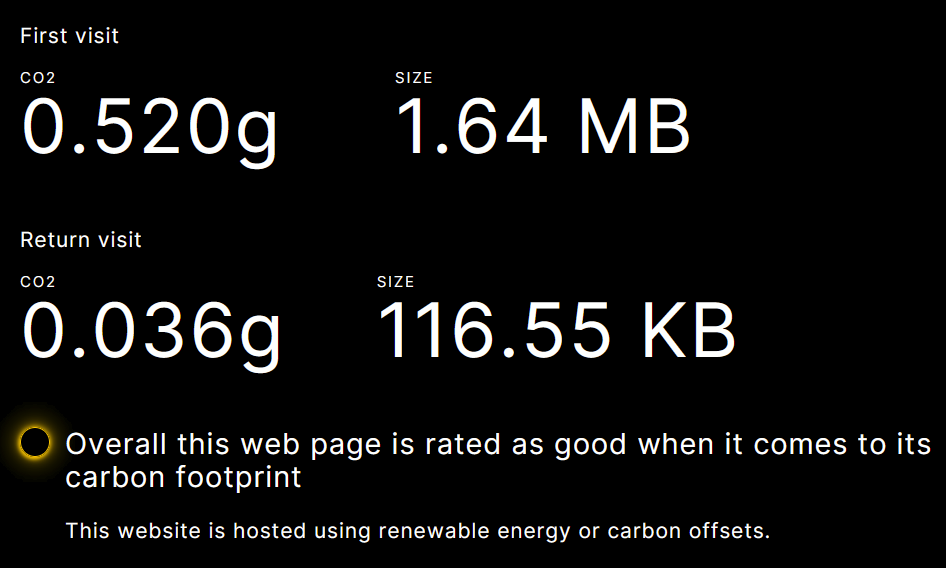
Figure 5 shows the carbon emissions of my newsletter www.drgreeneconomy.com. It emits 0.520g of CO2 on the first visit. Below the numbers came a message stating that the web page is good when it comes to its carbon footprint as it is hosted using renewable energy or carbon offsets.
Read: Disadvantages of renewable energy
Read: Solar energy facts: a win-win for businesses and the planet
If it wasn’t the case of renewable energy or carbon offsets, CO2 emissions would have been much higher. The monthly CO2 emission of this newsletter is 2.30kg. This is equivalent to driving 3.95 miles in a Tesla Model S or watching 1 hour of Netflix (in HD). At least 1 tree is needed to offset the CO2 in a year.
Summary
- Internet usage and email emissions have a significant environmental impact
- Social media’s carbon footprint varies based on account size
- Different types of emails have varying carbon footprints, and the cumulative effect of unnecessary emails on a global scale is significant
- Reducing digital emissions includes avoiding unnecessary emails and deleting unwanted emails
- Renewable energy sources should be considered for hosting websites and online platforms to minimize environmental impact



